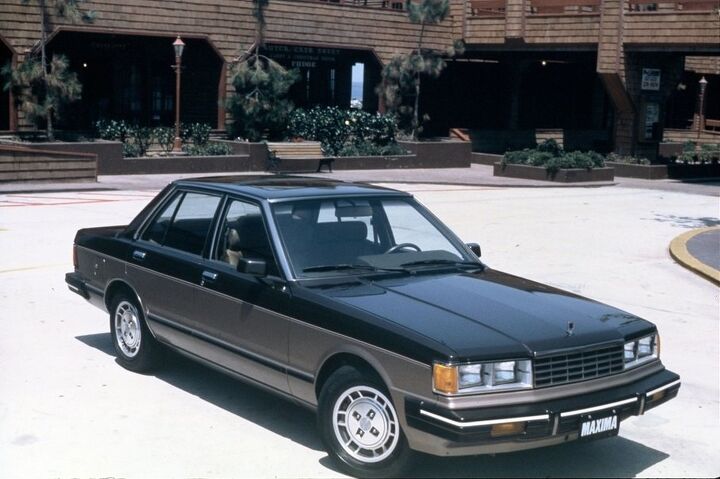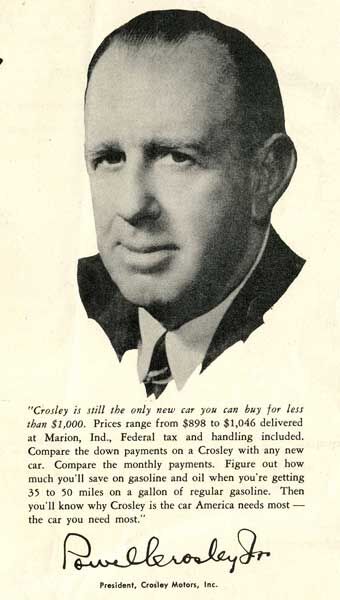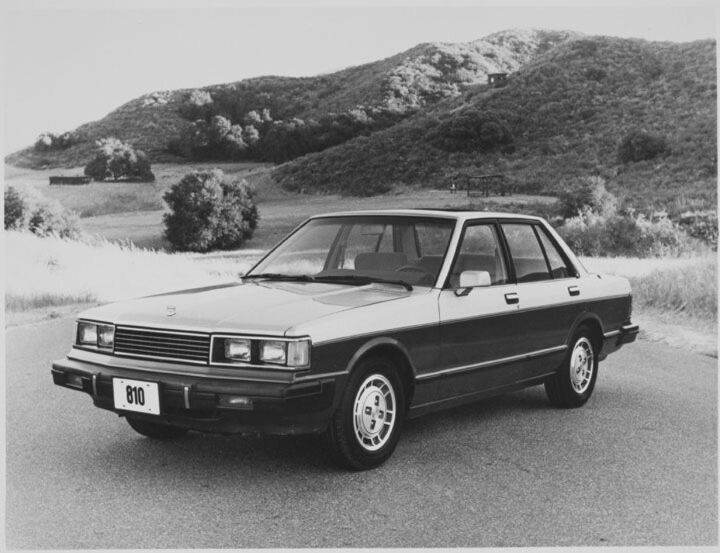#RareRides
Rare Rides Personas: Powel Crosley Junior, Tiny Cars, Radio, and Baseball (Part IV)
Powel Crosley Jr. entered a new and much more successful chapter of his life in 1916 when he founded the American Automobile Accessories Company (Americo) alongside Cooper Tire Company founder Ira J. Cooper. One of the earliest large-scale retailers of aftermarket car parts, Americo was a pioneer. The company sold parts made by other firms and manufactured its own parts. Many of the latter were invented by Crosley himself.
After just two years Crosley bought out Cooper’s share of the business and pulled in his younger brother Lewis as a new business partner. Despite not having an eye for the financial part of business, Powel was great at sales, advertising, and anticipating what the consumer wanted and needed most. And what they needed circa 1920 were home radios.
The QOTD Answer: The FX is the Best Infiniti Ever
Our recent QOTD post asked for your thoughts on the best Infiniti model ever. Therein, I promised a follow-up post with my answer to that very important question. So let’s get right down to it: I think the first generation FX was the best Infiniti ever.
Rare Rides Icons: The History of Stutz, Stop and Go Fast (Part XX)
Rare Rides Icons has been embroiled in the Stutz story since February of this year. Through six months and 20 total installments, we’ve covered the entirety of the Stutz brand’s evolution. Stutz started with a win at the inaugural Indianapolis 500 and eventually morphed into a manufacturer of high-powered luxury cars. After the emphasis turned to safety and away from racing, Stutz lost its footing quickly and went extinct.
Decades later it was resurrected by a wealthy man with a background in banking. In 1970 the new Stutz Motor Car Company capitalized on a wave of gauche neoclassical styling that the well-heeled of Hollywood and the Middle East so lovingly embraced. From there the Stutz lineup grew larger, more ostentatious, and more ridiculous. For a time the company sold its wares almost exclusively to foreign regimes, the exported vehicles long lost to time.
We finish the series with the largest and most exclusive Stutz ever built. Massive in length, it was much larger than the Duplex, IV-Porte, Victoria, and indeed the Diplomatica. We close out the Stutz chapter of our lives with Royale and a very interesting recent announcement.
Rare Rides Icons, The Nissan Maxima Story (Part III)
After its first few years as an 810, 910, Datsun by Nissan, Maxima by Datsun, Datsun/Nissan, and similar, the Maxima settled into its permanent home under Nissan branding. The well-equipped compact sedan sold over 198,000 copies in the United States between 1982 and 1984 (‘82 is the earliest year sales data is available) before an all-new Maxima arrived in 1985. With its second generation, Nissan veered off to distinguish the Maxima from its most direct competition, Toyota’s Cressida. Picture it, October 1984.
Rare Rides Icons: The Lincoln Mark Series Cars, Feeling Continental (Part XIII)
We return to the Lincoln Mark story at a very promising time for the personal luxury coupe. Aside from Ford’s floundering Thunderbird, several other new PLC models arrived in the late sixties. Every major Detroit automaker had one, and circa the turn of the Seventies even more would arrive!
Together, they formed three tiers of personal luxury, segmented by asking price. At the top was the long-standing Cadillac Eldorado, and in the middle were the Thunderbird, Buick Riviera, and Oldsmobile Toronado. They’d be joined in the Seventies by the likes of the Pontiac Grand Prix, Chrysler Cordoba, and Chevy Monte Carlo.
In 1965 Ford’s VP of passenger car product, Lee Iacocca, decided he’d make some use of the fifth-generation Thunderbird’s platform for a higher PLC purpose. With as much parts sharing and cost saving as possible, he’d create a luxurious new Mark that could take on the Eldorado. Ignoring the Marks III, IV, and V of the Fifties, the new Mark would start at III, and attempt to connect itself with the ultra-luxurious Continental Mark II of 1956. We begin today (oddly) with some endurance racing.
Rare Rides Icons: The History of Kia's Larger and Full-size Sedans (Part XII)
In our last installment of Kia’s large sedan history, we took a look at the second generation Cadenza. With its second salvo at the likes of the Toyota Avalon and the Buick Lacrosse, Kia planned to capture the near-luxury sedan customer who cared about value. Unfortunately, the Cadenza didn’t excel at anything in particular, and failed to stand out against more established competition.
A similar story played out a few years before when Kia introduced the first full-size rear-drive luxury car it ever designed in-house. Called the K9 (Quoris or K900 elsewhere), the large sedan shared a platform with the new rear-drive Hyundai Equus. Both sedans were the flagship offerings at their respective brands.
The Equus was flashy and almost American-inspired, while the K9 was conservative and understated. But it turned out a large and anonymous looking luxury car was not to the taste of most customers. Even in its home market, buyers vastly preferred the Equus and its large winged hood ornament. What was Kia to do?
Rare Rides Personas: Powel Crosley Junior, Tiny Cars, Radio, and Baseball (Part III)
We pick up our coverage of the life and times of Powel Crosley Jr. in 1916. At 30 years old, Crosley had a spouse of six years and two young children. He’d given up car-selling ventures in Indiana for a permanent return to his native land of Cincinnati.
His experiences in car sales and hype in Indiana turned the inventor into a marketing man, and Crosley’s main source of income was ad copy. He did that in between short-lived side jobs at small local automotive companies (that all went bust). All the while Crosley kept one eye on the automobile market and took notice of just how common and numerous the automobile had become on American roads. It was almost time for a new car venture.
Rare Rides Icons: Lamborghini's Front-Engine Grand Touring Coupes (Part VIII)
We return to our Rare Rides Icons coverage of Lamborghini’s front-engine coupes at a moment of relative triumph. After three earlier design proposals failed to pass muster with Ferruccio Lamborghini, a fourth received approval and was chosen as the 400GT’s replacement. Part of an in-house collaborative effort between Mr. Lamborghini, Carrozzeria Marazzi, and Lamborghini’s engineers, the resulting coupe was sedate, elegant, and not that removed from the outgoing 400GT 2+2.
Rare Rides Icons: The History of Stutz, Stop and Go Fast (Part XIX)
Today we find ourselves in the 19th chapter of Stutz historical coverage. In the early Eighties Stutz (somewhat) successfully branched out from its Blackhawk-only product line, and made the Bearcat targa, the Bearcat II convertible, some SUVs for dictatorial armament and parade usage, as well as sedans and limousines.
We’re in the latter group of automobiles at the moment. So far we’ve covered the one-off Duplex that found no customers, and its successor the IV-Porte that did. After the IV-Porte came the Victoria, which added 10 additional inches to IV-Porte’s base, the B-body Bonneville. Victoria survived the Bonneville’s full-size demise in 1981 and moved its basis to the similar Oldsmobile 88 in 1982. Around that time Stutz added an even more exclusive, larger, and more garish sedan to the lineup. Let’s talk about Diplomatica.
Rare Rides Icons: The Lincoln Mark Series Cars, Feeling Continental (Part XII)
Lincoln was in a bad way at the turn of the Sixties, both financially and in terms of its product. The company lost hundreds of millions (adjusted) in the early and middle portion of the decade, when it invested in and then promptly canceled the Continental Division. Attempting a rebound, Lincoln dumped lots more cash into a new unibody platform that was exclusive to Lincoln models.
The new lineup was on sale from 1958 to 1960 and was unfortunately introduced at the start of a sharp economic recession. However, even after the recession ended Lincoln’s gaudy and overworked styling caused customers to steer clear of Lincoln and purchase Cadillacs instead. Lincoln lost $60 million ($550 million adj.) more.
1961 heralded the arrival of an all-Continental lineup, the Elwood Engel design that was instantly popular and saved the company. However, the new and streamlined (in all ways) Lincoln lineup spared no room for a Continental Mark series. The Mark slumbered until 1968.
Rare Rides Icons, The Nissan Maxima Story (Part II)
Rare Rides Icons: The History of Kia's Larger and Full-size Sedans (Part XI)
Kia’s second attempt at a K7 (Cadenza in North America) arrived at a time when the company fully embraced a styling language of its own. More upscale and nicer to look at than the derivative generation of 2010 to 2016, the new Cadenza debuted in all global markets for 2017. Kia was hopeful the second Cadenza would sell better than the first one, particularly in North America. Any predictions on how that went?
Rare Rides Personas: Powel Crosley Junior, Tiny Cars, Radio, and Baseball (Part II)
We return today to our coverage of the life and times of Powel Crosley Junior, the first subject in our new Rare Rides Personas series. Born in Cincinnati in 1886, Crosley was the son of a lawyer and the eldest of four. From an early age, he showed adeptness at engineering and technology but lacked an interest in the classroom learning behind it.
He and his brother Lewis built their first car - an EV wagon - at ages 12 and 10 to win a bet with their father. It was the first of many car ventures for Crosley, who was completely fascinated with the up-and-coming automobile. By age 21 he was raising funds to start a car company.
Rare Rides Icons: Lamborghini's Front-Engine Grand Touring Coupes (Part VII)
When we last left Lamborghini’s front-engine coupe timeline, Ferruccio Lamborghini found himself about out of time to designate a replacement for the 400GT 2+2. Touring’s Flying Star II two-seat shooting brake was radical and possessed neither the restrained GT styling Mr. Lamborghini desired, nor the full four-place capacity. The company turned to Bertone and design legend Marcelo Gandini, who proposed the four-seat Marzal.
The Marzal’s design was as radical as the Flying Star if not more, and had gullwing doors and an interior filled with silver textile. After it debuted Ferruccio remarked how the Marzal was just a fun design exercise and was not intended to be a production car. Whether that statement was actually true remains unclear, but seems unlikely given the events that occurred post-Marzal. Lamborghini needed a real production design, and fast.
Rare Rides Icons, The Nissan Maxima Story (Part I)
With the recent and not surprising news of the Nissan Maxima’s planned demise in 2023, it’s time for a Rare Rides retrospective on a nameplate that was once lauded as one of the best sporty sedans on the market. From its origins as a rear-drive Datsun to the eighth generation that’s a shadow of its former self, the Maxima persisted with its unique value proposition: That it was a step up from the standard Japanese family sedan. Our story begins in Japan, with the Bluebird range.






























Recent Comments